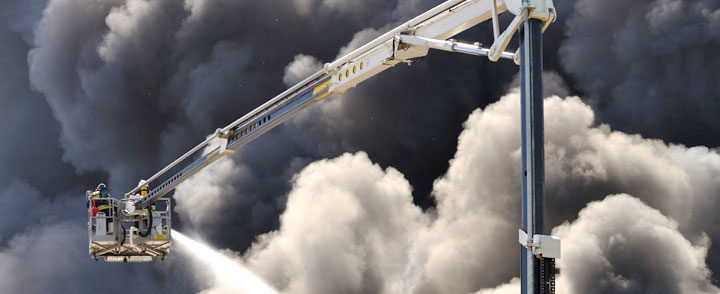Explosion Protection
We are your source for explosion proof enclosures and equipment supplying Calgary, Edmonton, Alberta, British Columbia, Saskatchewan, Ontario, Newfoundland, New Brunswick, Canada.
An explosion is defined as a sudden reaction involving rapid physical or chemical decay accompanied by an increase in temperature or pressure or both. The most common types of reaction are those between flammable gases, vapors or dust with oxygen contained in the surrounding air. Production lines or workplaces may be explosion hazard areas it these conditions are fulfilled. Hazardous areas typically exist in chemical plants, refineries, paint shops, cleaning facilities, mills and flour silos, tanks and loading facilities for flammable gases, liquids and solids.
By inhibiting ignition of a potentially explosive atmosphere, explosion-proof electrical equipment can eliminate danger at the source. Structural measures are taken in buildings used for domestic purposes to ensure that potentially explosive atmospheres cannot be formed. Deliberate removal of such safety measures may result in an explosion hazard.
Source of ignition
Source of ignition in industrial electrical equipment are as follows:
Hot surfaces – Surfaces heated by coils, resistors or lamps, brakes or hot bearings.
Electrical sparks – When circuits are broken or static discharge takes place.
Friction and impact sparks – When casings or enclosures are struck.
The design of explosion – proof electrical equipment eliminates these sources of ignition and this is confirmed by testing and certification.
Notwithstanding this, other sources of ignition may occur such as the following:
Flames and hot gas
Chemical reactions or biological processes which occur spontaneously at certain oxygen levels or temperatures
Lightning
Intense electromagnetic radiation
Ionizing radiation
Adiabatic compression and shock waves
Protection Types
For all protection types the rule applies that parts to which the potentially explosive atmosphere has unhindered access must not attain unacceptable temperatures. The temperatures must fall within the temperature class that applies to the particular potentially explosive atmosphere.
Get in touch with us today to learn more about how to make your worksite explosion proof!

